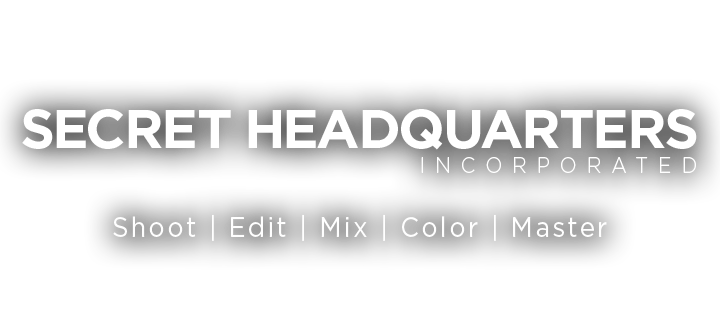I’m a closet camera nerd and occasional filmmaker. While I don’t sell myself as a DP, I have, on rare occasion, operated film and video cameras, including a day or two on my own features, as second unit Director for a few ultra-low budget digital films, as well as local commercials and documentary work in my youth. I irregularly follow a couple camera blogs and user’s groups – maybe the same ones you read – as much to keep up with the post tech as with the cameras.
I’ll admit it- I’m late to the HDSLR revolution- I was focused on the shortcomings of the format, not the advantages. Time for a reboot! I’ve decided to start shooting again, at least once in a while, for a number of reasons- including having a different type of creative outlet.
Kimberly, my wife and ‘silent’ partner at SecretHQ, is a very talented food stylist (stylefood.com), so we decided to refresh and upgrade my skills doing table-top video (aka food porn.) Kind of like learning to shoot fashion using top models!
After reading about the ‘CineStyle’ settings, created by Technicolor in April for the Canon EOS cameras (60D/7D/5D,) I was really anxious to try it out- from the point of view of a finishing editor. While the Canon cameras make amazing pictures for the price, one of their biggest drawbacks is the compression codec they use – 8 bit H.264, which was originally intended only as a final delivery codec. If the picture is correctly exposed and color balanced at the moment of recording, the Canon cameras rock – thus the HDSLR ‘revolution’ – but they’re much harder to use if you want to try to color correct or alter the image after the fact, in post.
The CineStyle settings are loaded into one of the user presets using the camera utility. They essentially set up the camera to shoot log – similar to, for example, S-Log in a Sony F3, F23 or F35, Log C on an Alexa, or, the ‘original’ log- a scan of 35mm film. In theory, this gives you more latitude to adjust the contrast in the shadows and highlights – allowing for more control and a more ‘filmic’ look in your color correction. With correct exposure, there’s no ‘black’ or ‘white’ – just grey shades of grey.
I’ve just typed, then deleted, two very boring paragraphs about log and contrast and shadows – anyone who wouldn’t fall asleep reading that already understands the problem. (This is also covered in depth at PhilipBloom.net, and other places.)
FOOD SHOOT
By no means a formal or systematic test, we had GREAT results using these settings- I was able to make very beautiful images after only a few minutes of color correction. (I’m not posting them here because, well, it’s breakfast… it’s not THAT sexy!) Kimberly’s work could make anyone look good, but the 5d, on a simple slider, really honored her skills.
I had forgotten about an important suggestion (I think I read it @ Hurlbut): set your lighting in the ‘pretty’ settings of the camera, but record in the neutral setting – and CineStyle is the ultimate in neutral settings. Consequently, my lighting was a little more contrasty than I’ll use next time- because I adjusted the lights while viewing the monitor with the camera set to CineStyle, and no matter what I did, everything looked washed out. (Obvious, in retrospect.) I’m looking forward to the next testing day.
Another ‘statement of the obvious’ – DON’T show food photographed in log to your clients WITHOUT color correction. It’s really unpalatable! Looks like something from a school lunch program.
The bottom line is this – if you shoot a contrasty image with the Canon cameras – a colorist CAN’T recover shadow detail – it’s gone. Black is black. By recording the image in… let’s call it pseudo-log, black and white are always shades of grey- making the image look kind of washed out to the eye, but if the exposure is even half- decent, a colorist or editor can add back the right amount of contrast- giving you much more control over the image in post.
If you’re shooting directly for the web and don’t expect to alter the image, make it as pretty as you can in the camera, and be done with it. However, if you’re planning a professional finish, make it as pretty as you can in the camera – then switch over to CineStyle to record! Your editor/colorist will thank you.
Next, I guess I better find some kind of hand-held/shoulder rig- any time the camera comes off the sticks… gak! It’s an earthquake!
More reading (where I got these ideas:)
philipbloom.net
hurlbutvisuals.com
blog.vincentlaforet.com/
reduser.net
technicolor.com/en/hi/cinema/filmmaking/digital-printer-lights/CineStyle
and
stylefood.com
Greg (at) SecretHQ.com
POSTSCRIPT:
This is my first ‘technical’ wiretap entry: please let us know if this is interesting to you, or anyone – I’ll try to keep the writing of interest to someone without too much re-running other peoples stuff and/or getting too techno-goobery.
Oh, and UPDATE: after a brief scare, the new fish are still doing well – one suffocated himself in an escape attempt, but the other 11 are scooting around the bottom of the tank.



